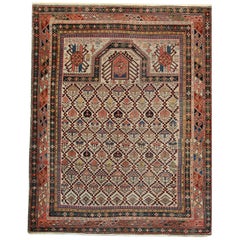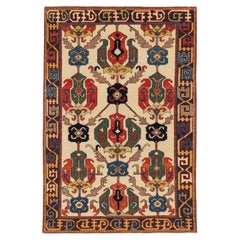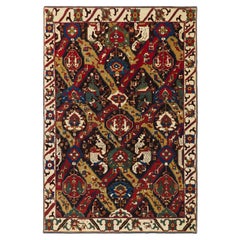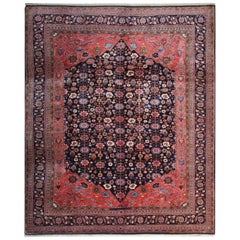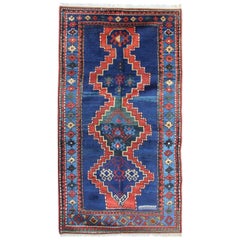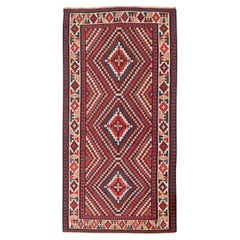Natural Fiber Caucasian Rugs
1880s Caucasian Rustic Antique Natural Fiber Caucasian Rugs
Wool, Cotton, Natural Fiber, Organic Material
21st Century and Contemporary Turkish Revival Natural Fiber Caucasian Rugs
Wool, Natural Fiber, Organic Material
21st Century and Contemporary Turkish Revival Natural Fiber Caucasian Rugs
Wool, Natural Fiber, Organic Material
1960s Azerbaijani Country Vintage Natural Fiber Caucasian Rugs
Wool, Cotton, Natural Fiber, Organic Material
Late 19th Century Caucasian Kazak Antique Natural Fiber Caucasian Rugs
Natural Fiber, Organic Material, Wool
Early 20th Century Caucasian Kilim Natural Fiber Caucasian Rugs
Wool, Natural Fiber
Early 20th Century Caucasian Kilim Natural Fiber Caucasian Rugs
Wool, Natural Fiber
1890s Caucasian Kazak Antique Natural Fiber Caucasian Rugs
Wool, Cotton, Natural Fiber, Organic Material
21st Century and Contemporary Turkish Revival Natural Fiber Caucasian Rugs
Wool, Organic Material, Natural Fiber
21st Century and Contemporary Turkish Revival Natural Fiber Caucasian Rugs
Wool, Natural Fiber, Organic Material
21st Century and Contemporary Turkish Revival Natural Fiber Caucasian Rugs
Wool, Natural Fiber, Organic Material
21st Century and Contemporary Turkish Revival Natural Fiber Caucasian Rugs
Wool, Organic Material, Natural Fiber
21st Century and Contemporary Caucasian Revival Natural Fiber Caucasian Rugs
Wool, Natural Fiber, Organic Material
21st Century and Contemporary Turkish Revival Natural Fiber Caucasian Rugs
Wool, Organic Material, Natural Fiber
21st Century and Contemporary Turkish Revival Natural Fiber Caucasian Rugs
Wool, Organic Material, Natural Fiber
21st Century and Contemporary Turkish Revival Natural Fiber Caucasian Rugs
Wool, Natural Fiber, Organic Material
21st Century and Contemporary Turkish Revival Natural Fiber Caucasian Rugs
Wool, Natural Fiber, Organic Material
21st Century and Contemporary Turkish Revival Natural Fiber Caucasian Rugs
Organic Material, Wool, Natural Fiber
21st Century and Contemporary Turkish Revival Natural Fiber Caucasian Rugs
Wool, Natural Fiber, Organic Material
Mid-20th Century Caucasian Kilim Natural Fiber Caucasian Rugs
Wool, Natural Fiber
21st Century and Contemporary Turkish Revival Natural Fiber Caucasian Rugs
Wool, Natural Fiber, Organic Material
21st Century and Contemporary Turkish Revival Natural Fiber Caucasian Rugs
Wool, Natural Fiber, Organic Material
Late 19th Century Caucasian Kilim Antique Natural Fiber Caucasian Rugs
Wool, Natural Fiber
21st Century and Contemporary Turkish Revival Natural Fiber Caucasian Rugs
Wool, Natural Fiber, Organic Material
21st Century and Contemporary Turkish Revival Natural Fiber Caucasian Rugs
Wool, Natural Fiber, Organic Material
21st Century and Contemporary Caucasian Revival Natural Fiber Caucasian Rugs
Wool, Natural Fiber, Organic Material
1990s Afghan Kazak Natural Fiber Caucasian Rugs
Wool, Organic Material, Natural Fiber, Cotton
21st Century and Contemporary Turkish Revival Natural Fiber Caucasian Rugs
Natural Fiber, Organic Material, Wool
21st Century and Contemporary Turkish Revival Natural Fiber Caucasian Rugs
Wool, Natural Fiber, Organic Material
21st Century and Contemporary Turkish Revival Natural Fiber Caucasian Rugs
Wool, Natural Fiber, Organic Material
Mid-20th Century Caucasian Kilim Natural Fiber Caucasian Rugs
Wool, Natural Fiber
21st Century and Contemporary Turkish Revival Natural Fiber Caucasian Rugs
Wool, Natural Fiber, Organic Material
Early 20th Century Caucasian Kilim Natural Fiber Caucasian Rugs
Wool, Natural Fiber, Organic Material
21st Century and Contemporary Turkish Revival Natural Fiber Caucasian Rugs
Wool, Natural Fiber, Organic Material
21st Century and Contemporary Turkish Revival Natural Fiber Caucasian Rugs
Wool, Natural Fiber, Organic Material
Mid-20th Century Caucasian Kilim Natural Fiber Caucasian Rugs
Wool, Natural Fiber
Mid-20th Century Caucasian Kilim Natural Fiber Caucasian Rugs
Wool, Natural Fiber, Cotton
21st Century and Contemporary Turkish Revival Natural Fiber Caucasian Rugs
Wool, Natural Fiber, Organic Material
21st Century and Contemporary Turkish Revival Natural Fiber Caucasian Rugs
Wool, Natural Fiber, Organic Material
21st Century and Contemporary Turkish Revival Natural Fiber Caucasian Rugs
Wool, Natural Fiber, Organic Material
Early 20th Century Caucasian Kilim Natural Fiber Caucasian Rugs
Wool, Natural Fiber, Organic Material
21st Century and Contemporary Turkish Revival Natural Fiber Caucasian Rugs
Wool, Natural Fiber, Organic Material
Early 20th Century Caucasian Kilim Natural Fiber Caucasian Rugs
Wool, Natural Fiber, Organic Material
Early 20th Century Caucasian Kilim Natural Fiber Caucasian Rugs
Wool, Natural Fiber, Organic Material
Early 20th Century Caucasian Kilim Natural Fiber Caucasian Rugs
Wool, Natural Fiber, Organic Material
Early 20th Century Caucasian Kilim Natural Fiber Caucasian Rugs
Wool, Natural Fiber, Organic Material
Early 20th Century Caucasian Kilim Natural Fiber Caucasian Rugs
Wool, Natural Fiber, Organic Material
Early 20th Century Caucasian Kilim Natural Fiber Caucasian Rugs
Wool, Natural Fiber, Organic Material
21st Century and Contemporary Turkish Revival Natural Fiber Caucasian Rugs
Wool, Natural Fiber, Organic Material
Late 20th Century Caucasian Kilim Natural Fiber Caucasian Rugs
Wool, Natural Fiber
Mid-20th Century Caucasian Kilim Natural Fiber Caucasian Rugs
Wool, Natural Fiber
Early 20th Century Caucasian Kilim Natural Fiber Caucasian Rugs
Wool, Natural Fiber
21st Century and Contemporary Turkish Revival Natural Fiber Caucasian Rugs
Wool, Natural Fiber, Organic Material
21st Century and Contemporary Turkish Revival Natural Fiber Caucasian Rugs
Wool, Natural Fiber, Organic Material
21st Century and Contemporary Turkish Revival Natural Fiber Caucasian Rugs
Wool, Natural Fiber, Organic Material
21st Century and Contemporary Turkish Revival Natural Fiber Caucasian Rugs
Wool, Natural Fiber, Organic Material
21st Century and Contemporary Turkish Revival Natural Fiber Caucasian Rugs
Wool, Natural Fiber, Organic Material
21st Century and Contemporary Turkish Revival Natural Fiber Caucasian Rugs
Wool, Natural Fiber, Organic Material
